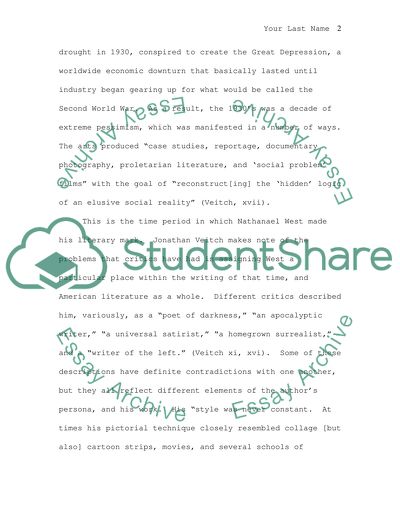Cite this document
(“Q Assess the effectiveness of Nathanael West's use of Surreal elements Essay”, n.d.)
Retrieved from https://studentshare.org/miscellaneous/1508551-q-assess-the-effectiveness-of-nathanael-wests-use-of-surreal-elements-in-the-day-of-the-locust
Retrieved from https://studentshare.org/miscellaneous/1508551-q-assess-the-effectiveness-of-nathanael-wests-use-of-surreal-elements-in-the-day-of-the-locust
(Q Assess the Effectiveness of Nathanael West'S Use of Surreal Elements Essay)
https://studentshare.org/miscellaneous/1508551-q-assess-the-effectiveness-of-nathanael-wests-use-of-surreal-elements-in-the-day-of-the-locust.
https://studentshare.org/miscellaneous/1508551-q-assess-the-effectiveness-of-nathanael-wests-use-of-surreal-elements-in-the-day-of-the-locust.
“Q Assess the Effectiveness of Nathanael West'S Use of Surreal Elements Essay”, n.d. https://studentshare.org/miscellaneous/1508551-q-assess-the-effectiveness-of-nathanael-wests-use-of-surreal-elements-in-the-day-of-the-locust.


